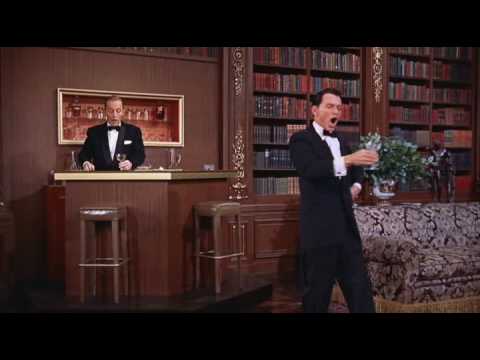Dance performer, choreographer and director François Lamargot says his recent “dance-theater” piece, J̵e̵ t̵’a̵i̵m̵e̵ … à la folie, comes down to his view that our civilization has generated a “handicap of the heart” that blinds its members to the destruction it provokes within and around it.
It’s easy to imagine somebody like Kirill, Patriarch of Moscow and all the Rus’ or Ali Khamenei, Ayatollah of Iran, or indeed any number of spirit humbuggers saying the very same thing, citing the evils of feminism as they en-Gulag and/or poison some uppity women-folk.
However, unlike the humbuggers, however, when François Lamargot talks about a “handicap of the heart”, he means impaired hearing, seeing, touching, tasting and smelling of the here and now: non-development of the ordinary senses.
Lamargot thinks that when these ordinary powers are weak, the world within a body, the individual or personality, becomes a plaything of what Sting called the poets, priests and politicians …. whose logic ties you up and rapes you.
Without a within nourished from the ordinary senses, Lamargot thinks, a body loses herself or himself in a breathless spiral of passive reaction to the world without. Asked if J̵e̵ t̵’a̵i̵m̵e̵ … à la folie … is study of the connections between us and the world or of our disconnection from it, Lamargot affirms, “Disconnection”, adding that, in the end, what he wants is to suggest something other (than madness) is possible. He just wants to get beyond discourse, to strain every sinew of theatrics, dance and multimedia to get across an other sensibility.
Son of a film projectionist and a stage actress, a neighborhood hip hopper with academic dance credentials, as a kid François Lamargot started acting with his mom at the now defunct Théâtre de Ménilmontant collective. He came to dance – classic, jazz and contemporary, with parallel specialties in break and house (freestyle personal expressive) – because he felt more at ease with his body. Also, he says, dancing makes him feel more able to express and show meaning.
Since then, Lamargot has created, performed, taught and encouraged dance performance from his native Paris 20ème to the Comoros Islands, from Lyon to Haiti and Gabon, from Marseille to New Caledonia. He’s as intellectually and professionally in his element working on multidisciplinary career development with young people at the Jeune Ballet Européen or doing tailor-made creation for the reference hip-hop festivals Kalypso and Karavel. His philosophical reference points include Taoism, different practices based on the notion of a world in becoming, the writer Marguerite Duras, the Argentine painter Luis Ansa, the contemporary social activist Henri Gougaud and the antique Zen masters Dôgen and Lin-Tsi.
So, how does Lamargot get all this life experience and philosophy into a dance performance such as J̵e̵ t̵’a̵i̵m̵e̵ … à la folie …?
First off, by imagining then executing a form of dance. When I saw a first-draft production of J̵e̵ t̵’a̵i̵m̵e̵ … at the Théâtre National de la Danse (Palais du Chaillot) in 2022, I thought of it as “cinematized dance-theater”, even as “musical drama”. I still think that’s a pretty understandable description.
Lamargot says that, taken together, what I could experience as musical drama is for him a distinct genre that hybridizes hip hop and specific elements of contemporary dance, especially danse contact (“contact improvisation” or “body empathy dance”).
Lamargot says he’s been instinctively looking for points of fusion among his different dance practices all along: “Movement has no genre frontiers.”. He adds that there is anyhow a lot of complementarity in dance performance. For instance, [the foot-fluttering movement called] petite batterie in classical dance “has a rhythm that closely resembles that in house dance…”
Lamargot says that, these days, in any case, he doesn’t think much about the originating genre of a move, preferring to think in terms of movement visual quality: “roundness, fluidity, impact, density, amplitude, explosiveness” and movement effect on the spectator.
What counts for J̵e̵ t̵’a̵i̵m̵e̵ … à la folie is theatricality, set design and the astute use of video. The sensibility Lamargot wishes to translate involves, as described above, a civilization whose roots in the ordinary senses have withered away.
J̵e̵ t̵’a̵i̵m̵e̵ … figures both dream and reality – a doubling that mobilizes Lamargot’s whole performance toolbox in the service of “showing” this sensibility.
The piece is played out on a set that recalls the feeling one has at the Palais de Glace, Baroque elegance that has lost its cultural moorings, is sliding toward hopeless forgotten-ness.
On set, technology such as video, Lamargot says “translates as a mirror in which a given character also exists.” He observes that as a genre hip hop is powerful “very forward, very much on the attack, very effective visually” and often uses set-piece situations to induce emotions in characters which are then picked up by spectators not dramatic narrative but as sensibility.
“Hip hop is very good for turning tragedy into comedy, for generating irony or dramatically enabling the dream/reality doubling that the video is hosting,” Lamargot observes, that in contrast to hip hop, “Contemporary dance – for J̵e̵ t̵’a̵i̵m̵e̵ … à la folie, he is thinking of danse contact in particular – operates around the receptive body, receptiveness that, as in T’ai chi or Karate, is turned into strength rather than power…
In the Paris region, you can catch J̵e̵ t̵’a̵i̵m̵e̵ … à la folie:
– 3 and 4 February 2024 at the Suresnes Cités Danse festival
Go to Source
Author: Paul Tracy DANISON


